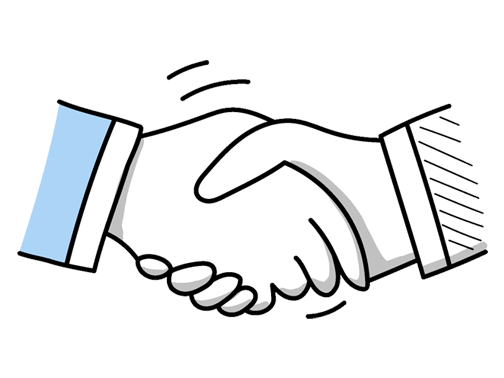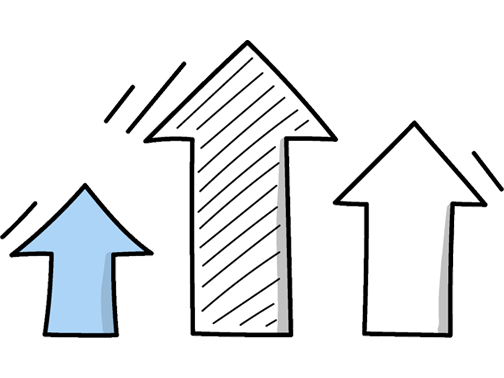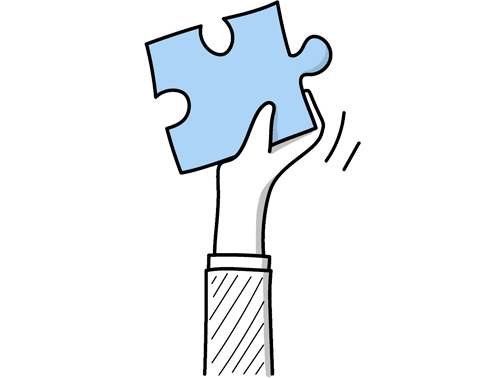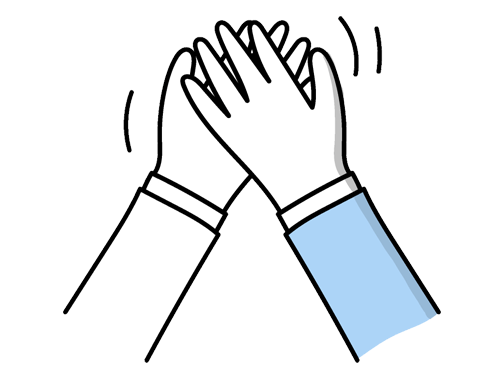Director of Marketing and Communications Interview Questions (2025 Guide)
Find out common Director of Marketing and Communications questions, how to answer, and tips for your next job interview
Practice Interviews Online - Identify your strengths and weakness in a realistic Director of Marketing and Communications mock interview, under 10 minutes
Practice Now »Director of Marketing and Communications Interview Questions
Interviewers ask this question to assess how you track and evaluate the effectiveness of your marketing efforts to ensure they align with business goals. You need to explain that you set clear KPIs like conversion rates or brand awareness growth, use analytics tools to monitor performance and ROI, and gather both quantitative data and qualitative feedback to measure overall campaign impact.
Example: When measuring a campaign’s success, I start by setting specific goals aligned with the business objectives. Throughout, I track key metrics like engagement rates or conversion figures to see what’s working. I also gather feedback from customers and the sales team to gain insight beyond the numbers. For example, after a recent product launch, combining data with customer responses helped us fine-tune our messaging for better impact.
This interview question assesses your ability to create a strategic plan that drives business growth and aligns marketing efforts with company goals. You need to explain how you research market trends and customer needs, set clear, measurable objectives tied to business goals, and implement the plan while monitoring results and adjusting based on data.
Example: Developing a strong marketing strategy starts with understanding the market and what customers truly want. I gather insights through research and listen closely to trends to ensure our approach resonates. From there, I set clear targets that support the company’s bigger goals. Implementation is about teamwork and agility—tracking results regularly and refining tactics based on data helps keep everything on course, much like steering a ship using constant feedback.
Hiring managers ask this question to assess your openness to improvement and your ability to use feedback effectively in refining your communication strategies. You need to say that you welcome constructive criticism without defensiveness and systematically evaluate feedback to make thoughtful adjustments that enhance your marketing and communication efforts.
Example: I view feedback as a valuable tool to refine our messaging. When I receive input, I take time to understand the perspective and assess how it aligns with our goals. For example, after a campaign review, I adjusted our tone to better connect with a diverse audience, which improved engagement. Keeping communication open ensures we evolve and stay relevant, turning critique into progress rather than setback.
Employers ask this question to see if you can effectively engage diverse groups by adjusting your messaging. You need to explain how you change your language, tone, and channels based on the audience’s needs and give specific examples showing your understanding and research of those audiences.
Example: I focus on understanding who I’m speaking to—their goals and concerns guide my approach. For senior executives, I keep messages concise and impact-driven, while with teams I might use a more collaborative tone. Choosing the right channel matters too; detailed updates might go in email, but quick wins I share via instant messaging. It’s about making the message relevant and accessible for each group.
Questions like this assess your adaptability and problem-solving skills when facing unexpected challenges. In your answer, clearly explain the situation, the reason for pivoting, and the successful outcome of your revised strategy.
Example: Certainly. In a previous role, when sudden regulatory changes impacted our ad campaigns, we swiftly shifted focus from paid media to organic storytelling across social platforms. This not only maintained engagement but strengthened community trust. It was a reminder that agility and listening closely to our audience can turn challenges into opportunities for deeper connections.
This question helps interviewers understand how you handle interpersonal challenges that can impact team performance. You need to explain that you identify root causes through one-on-one meetings, encourage open communication within the team, and create fair, mutually agreed-upon solutions to resolve conflicts effectively.
Example: When conflicts arise, I first listen carefully to understand everyone’s perspective, which helps uncover the real issues. I encourage open dialogue so team members feel heard and can collaborate on solutions. For example, in a previous role, I facilitated a team meeting where we openly discussed frustrations, leading to a shared plan that strengthened trust and improved working relationships. My focus is always on fairness and maintaining a positive, productive environment.
Hiring managers ask this question to see how proactive and strategic you are in managing risks that could damage the brand’s reputation. You need to say that you identify potential risks, develop clear response plans, and regularly train your team to act quickly and consistently during crises.
Example: When preparing for potential crises, I focus on building a strong monitoring system to catch early warning signs and maintain clear, honest communication with both the team and audience. I’ve found that having adaptable messaging ready helps respond quickly without sounding scripted. For example, during a past product recall, we prioritized transparency which preserved customer trust and minimized fallout. Staying proactive and connected makes all the difference.
Questions like this assess your ability to strategize, lead, and deliver measurable results in high-impact projects. You need to clearly describe the campaign, highlight your leadership role, and focus on specific outcomes that surpassed goals.
Example: Certainly. In my previous role, I spearheaded a campaign that centred on community engagement rather than just product promotion. By collaborating with local influencers and creating authentic stories, we saw a 30% rise in brand awareness and surpassed sales targets by 20%. It was rewarding how a more genuine approach not only resonated with our audience but also elevated the brand’s presence beyond initial expectations.
Hiring managers ask this question to assess your ability to create cohesive marketing strategies that leverage both digital and traditional channels effectively. You need to explain how you align objectives across channels, use data analytics to measure success, and incorporate innovative digital tactics alongside established methods.
Example: My approach blends digital and traditional marketing to create cohesive campaigns that reach audiences wherever they are. By using data insights, I track which channels perform best and adjust strategies accordingly. For example, pairing targeted social media ads with print campaigns can boost engagement and brand recall. Staying flexible allows me to innovate—embracing new digital trends while respecting proven methods ensures we connect effectively and efficiently.
This question helps interviewers understand how you manage your team’s workload to maximize impact and efficiency. You need to explain that you assess tasks by their impact and urgency, delegate based on team strengths, and regularly communicate to adjust priorities as needed.
Example: When managing my team’s workload, I start by evaluating which projects align most closely with our strategic goals and deadlines. I then assign tasks based on each person’s strengths, ensuring resources are used effectively. Regular check-ins help me stay updated and adjust priorities as needed. For example, during a recent campaign launch, shifting focus quickly from content creation to stakeholder engagement made all the difference in meeting our targets.
Employers ask this question to assess your ability to plan, execute, and measure successful campaigns that align with business goals. In your answer, clearly outline the campaign’s objectives, the strategies you implemented, and the quantifiable results you achieved.
Example: Certainly. In a recent campaign to boost brand awareness for a new product line, we focused on storytelling through targeted social media and influencer partnerships. By tailoring content to resonate with key audiences, engagement increased by 40% over three months, directly driving a 20% sales uplift. This approach not only strengthened customer connections but also positioned the brand more firmly within a competitive market.
This question assesses your ability to leverage social media for timely and transparent communication during a crisis. You need to explain how you use social media to quickly inform stakeholders, manage public perception, and maintain trust.
Example: Social media is often the first place people turn during a crisis, so it’s crucial for timely, transparent communication. It allows us to address concerns directly and correct misinformation quickly. For example, during a product recall, we used social channels to provide clear updates and reassurance, which helped maintain trust and control the narrative effectively. It’s about being honest and responsive in real time.
Interviewers ask this to see how you connect with audiences and make messages memorable. You need to say that storytelling humanizes your brand and helps convey complex ideas clearly, making your communication more engaging and effective.
Example: Storytelling is central to how I connect with audiences. It transforms messages into memorable experiences, making complex ideas relatable. For example, when launching a new product, sharing a customer’s journey brings the brand to life and builds trust. Ultimately, stories create emotional connections that inspire action, helping us cut through the noise and engage people on a deeper level.
What they want to understand is how you have developed as a leader and how you adapt your style to meet challenges and motivate your team effectively. You need to explain how your leadership approach has evolved with examples of communication, motivation techniques, and decision-making that benefited your team and aligned with company goals.
Example: My leadership style has become more collaborative over time, focusing on open communication and team motivation. Early in my career, I led with clear direction, but now I encourage input to solve challenges collectively. For example, in my last role, involving the team in campaign strategies not only boosted creativity but also strengthened ownership and results. Adapting like this has helped me navigate complex projects smoothly.
This question assesses your leadership skills and ability to manage change effectively. You need to describe a specific situation where you guided your team through change, focusing on your communication, decision-making, and how you ensured a positive outcome.
Example: During a major rebrand at my previous company, I guided the marketing team through the transition by fostering open communication and involving everyone in shaping the new direction. We held regular workshops to share progress and address concerns, which helped maintain morale and focus. Ultimately, this collaborative approach not only smoothed the change but also strengthened our team’s commitment to the new brand identity.
Questions like this assess your ability to manage communication effectively under pressure to maintain trust and alignment. You need to explain that you provide timely, transparent updates, coordinate messaging across teams for consistency, and balance clear facts with empathy to address stakeholder concerns.
Example: In a crisis, I focus on honest, timely updates that keep everyone informed without causing unnecessary alarm. I work closely with teams to ensure our messages are consistent and sensitive to the situation. For example, during a recent product recall, we balanced urgency with empathy, addressing concerns promptly while reinforcing our commitment to quality and support. This approach helps maintain trust and clarity throughout challenging times.
Interviewers ask this to assess your ability to handle high-pressure situations and protect the company’s image. You need to explain the situation clearly, describe your leadership and communication strategies, and highlight the successful outcome or lessons learned.
Example: Certainly. In a previous role, a product recall threatened customer trust. I coordinated clear, honest communication across all channels, addressing concerns promptly and transparently. By engaging directly with customers and the media, we not only contained the issue but strengthened our brand's credibility. It was a reminder that openness and responsiveness are key when navigating unexpected challenges.
Interviewers ask this to see how you maintain a unified brand image that strengthens recognition and trust. You need to explain that you create clear brand guidelines, implement regular audits of marketing materials, and lead team training sessions to ensure everyone adheres to the standards.
Example: Ensuring brand consistency starts with having well-defined guidelines that everyone understands and can easily access. I make it a point to review all materials before they go public, working closely with teams to keep messaging aligned. Regular training and open communication help everyone stay on the same page. For example, at my last role, this approach reduced off-brand content by 30%, strengthening overall brand recognition.
Interviewers ask this to assess your leadership and collaboration skills, ensuring you can align your team and cross-functional partners toward common goals. You need to say you prioritize regular, transparent communication, use clear channels, and foster an open environment where feedback is encouraged.
Example: I focus on creating an open environment where everyone feels comfortable sharing ideas. Regular check-ins and collaborative tools help keep everyone aligned, especially across departments. For example, I once introduced brief weekly huddles that improved project clarity and reduced misunderstandings. It’s about listening as much as speaking, ensuring messages are clear and feedback flows both ways to foster trust and teamwork.
Hiring managers ask this question to see if you actively keep up with changes that could impact the company’s success and how you use that knowledge to guide your team strategically. You need to explain that you regularly monitor industry reports and analyze trends to identify key opportunities, then integrate relevant insights into your marketing strategies to drive innovative, effective campaigns.
Example: I make it a habit to regularly engage with industry reports, attend key conferences, and follow thought leaders on platforms like LinkedIn. I then evaluate which emerging trends align with our goals, discussing these insights with my team to shape practical initiatives. For example, spotting the rise of personalised digital campaigns led us to tailor our messaging, which significantly boosted audience engagement.
Employers ask this question to see if you can critically assess your response and learn from challenges to improve future strategies. You need to say that you review key performance metrics, gather stakeholder feedback, and conduct a thorough debrief to identify successes and areas for improvement.
Example: After a crisis, I review key metrics like media coverage tone, stakeholder feedback, and social media sentiment to see if our messaging landed well. I also gather the team to reflect on what worked and what didn’t, ensuring we learn and improve. For example, after a past product recall, tracking customer trust scores helped us measure recovery and adjust our communication approach accordingly.
Questions like this assess your ability to strategically choose marketing channels that align with campaign goals and audience needs. You should explain how you identify target demographics, analyze past data for effectiveness, and adapt your channel mix to optimize results within budget and market changes.
Example: When choosing marketing channels, I start by really understanding who we’re trying to reach and what we want to achieve. Then, I look at past data and current trends to see which platforms deliver the best engagement and ROI. For example, if a younger audience is key, social media might lead, but I stay flexible, ready to shift resources if new insights suggest another channel will perform better.
What they want to understand is how you actively keep your team driven and efficient through ongoing engagement and clear goal-setting. You need to explain that you maintain motivation by holding regular one-on-ones to connect with team members personally, align their objectives with the company’s vision, and address any conflicts quickly to sustain productivity.
Example: I focus on creating a clear connection between our daily tasks and the company’s bigger vision, so everyone understands their impact. Regular check-ins and open conversations help me address any obstacles early, keeping the team supported and energized. When pressure rises, I encourage collaboration and celebrate small wins to maintain momentum. For example, during a recent campaign crunch, recognizing individual efforts really lifted spirits and drove results.
Interviewers ask this to see if you understand how marketing drives business success. You need to explain how you ensure marketing plans support company objectives by collaborating with leadership and using data to guide decisions.
Example: To align marketing with business goals, I start by understanding the company’s vision and key objectives. Then, I tailor campaigns to support those priorities, ensuring every message drives growth or brand awareness. For example, at my last role, we focused on digital channels to boost customer engagement, directly contributing to a 15% sales increase. It’s all about clear communication and measurable outcomes that move the business forward.
Interviewers ask this question to understand how you measure success and make data-driven decisions in marketing. You need to mention key metrics like ROI, customer acquisition cost, and conversion rates, explain how you analyze these numbers to guide strategy, and connect them to overall business and brand goals.
Example: When assessing marketing performance, I focus on metrics that align closely with our strategic goals—like customer acquisition cost, conversion rates, and brand engagement. For example, tracking conversion rates not only shows campaign effectiveness but also highlights audience behaviour patterns, guiding future initiatives. It’s about interpreting the data to understand what drives growth and ensuring our efforts support both short-term results and long-term brand value.
Ace your next Director of Marketing and Communications interview with even more questions and answers
Common Interview Questions To Expect
The interviewer is looking for examples of problem-solving skills, conflict resolution abilities, and how you handle challenges in the workplace. Be honest and provide a specific situation, your actions, and the outcome.
Example: Sure! One challenge I faced was when our marketing campaign didn't perform as expected. I analyzed the data, identified the issue, and made adjustments to the strategy. As a result, we were able to increase engagement and achieve our goals.
The interviewer is looking for your long-term career goals, ambition, and commitment to the company. Answers should demonstrate a desire for growth and development within the organization.
Example: In five years, I see myself continuing to grow and excel in my role as Director of Marketing and Communications. I am committed to furthering my skills and knowledge in the field, and I hope to take on more leadership responsibilities within the company. Ultimately, my goal is to make a significant impact on the organization's marketing strategies and overall success.
The interviewer is looking for how you handle criticism, your ability to reflect on feedback, and how you have used criticism to improve your work. Be honest and show growth.
Example: Sure! One time, I received feedback from a colleague that my marketing campaign was not resonating with our target audience. Instead of getting defensive, I took the feedback on board and made adjustments to the messaging and visuals. As a result, the campaign saw a significant increase in engagement and conversions.
The interviewer is looking for examples of how you manage stress and stay productive in high-pressure situations. Be sure to highlight your problem-solving skills and ability to prioritize tasks effectively.
Example: I handle pressure by staying organized and prioritizing tasks based on deadlines and importance. I also make sure to communicate effectively with my team to delegate responsibilities and work together to meet goals. Overall, I thrive in fast-paced environments and use pressure as motivation to excel in my role as Director of Marketing and Communications.
The interviewer is looking for examples of how you collaborate with others, communicate effectively, resolve conflicts, and contribute to team success.
Example: Sure! In my role as Director of Marketing and Communications, I have led cross-functional teams to execute successful campaigns and projects. I believe in open communication, active listening, and fostering a positive team dynamic to achieve our goals. I have experience in resolving conflicts and finding solutions that benefit the team as a whole.
Company Research Tips
The company's website is a treasure trove of information. Look for details about the company's history, mission, vision, and values. Pay special attention to their products or services, target audience, and marketing strategies. The 'About Us' and 'News' or 'Blog' sections can provide insights into the company culture and recent developments. Understanding these aspects will help you align your responses with the company's objectives and culture.
Tip: Don't just skim through the website. Take notes and think about how you can contribute to the company's goals and initiatives.
Social media platforms provide unfiltered insights into a company's brand image, customer engagement, and marketing strategies. Analyze their posts, comments, likes, shares, and overall engagement on platforms like LinkedIn, Facebook, Twitter, and Instagram. This will give you an idea of their tone of voice, content strategy, and how they interact with their audience. It can also highlight any recent campaigns or initiatives.
Tip: Look for patterns or recurring themes in their posts. This could indicate what the company values most.
Understanding the competitive landscape can give you an edge in the interview. Research the company's main competitors and their marketing strategies. This can help you identify the company's unique selling proposition (USP) and potential areas for improvement. You can use this information to suggest how you could help the company stand out from its competitors.
Tip: Use tools like Google Alerts, SEMrush, or SimilarWeb to track competitors' activities and market trends.
Stay updated with the latest trends and developments in the marketing and communications industry. This includes understanding the impact of digital transformation, the role of data analytics, the importance of customer experience, and the rise of social media marketing. Demonstrating your knowledge of industry trends shows that you are proactive and ready to adapt to changes.
Tip: Follow industry leaders and influencers on social media, subscribe to industry-specific newsletters, and read relevant blogs and articles.
Platforms like Glassdoor and LinkedIn can provide valuable insights from current and former employees. This can give you a sense of the company culture, work environment, and management style. You can also find information about the company's strengths and weaknesses, which can help you tailor your responses during the interview.
Tip: Take employee reviews with a grain of salt as they can be subjective. Look for common themes or recurring issues.
What to wear to an Director of Marketing and Communications interview
- Dark-coloured business suit
- White or light-coloured dress shirt
- Conservative tie with minimal patterns
- Polished dress shoes
- Minimal and professional accessories
- Neat and professional hairstyle
- Light and professional makeup for women
- Clean and trimmed nails
- Avoid flashy jewellery
- Wear subtle perfume or cologne





